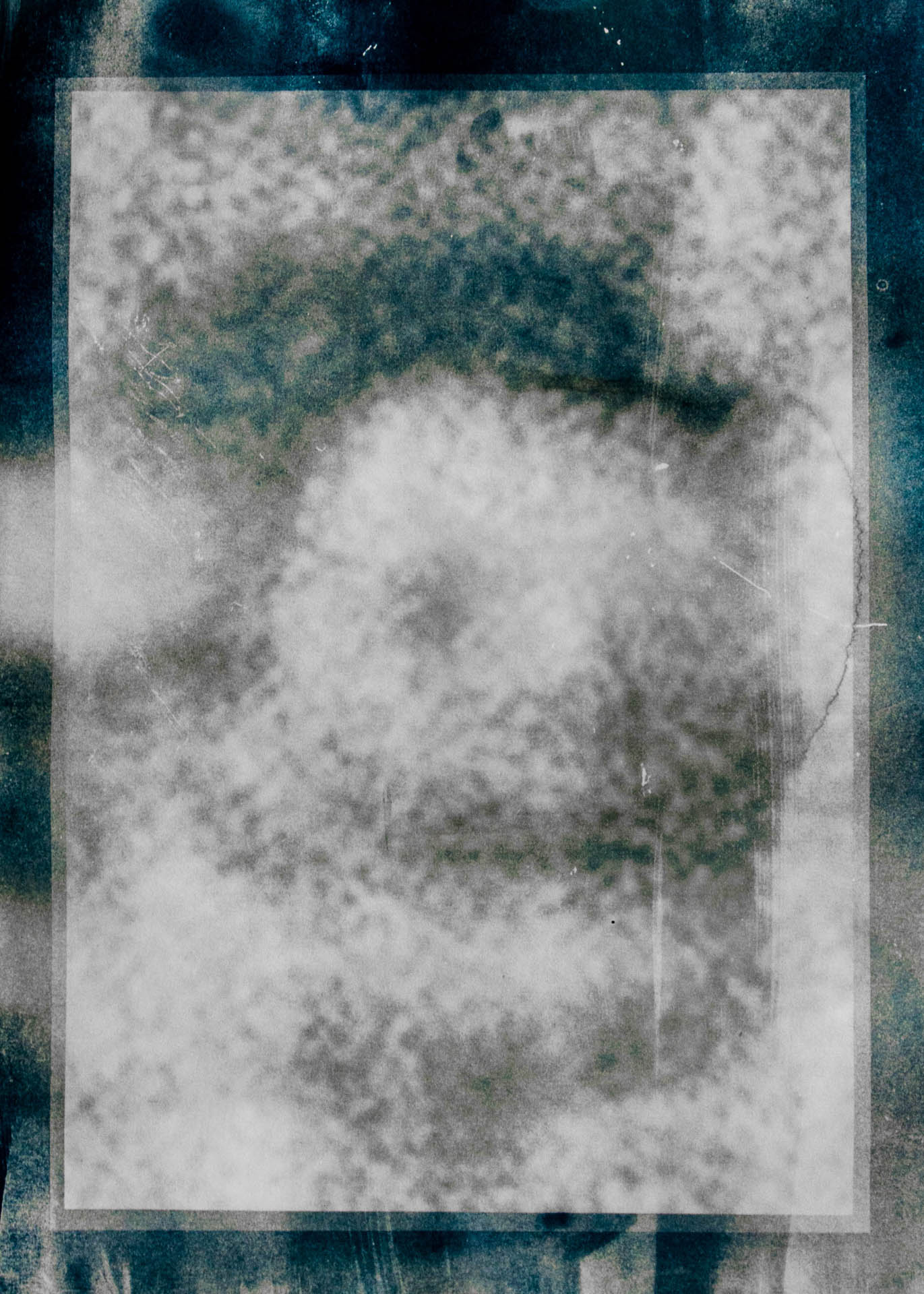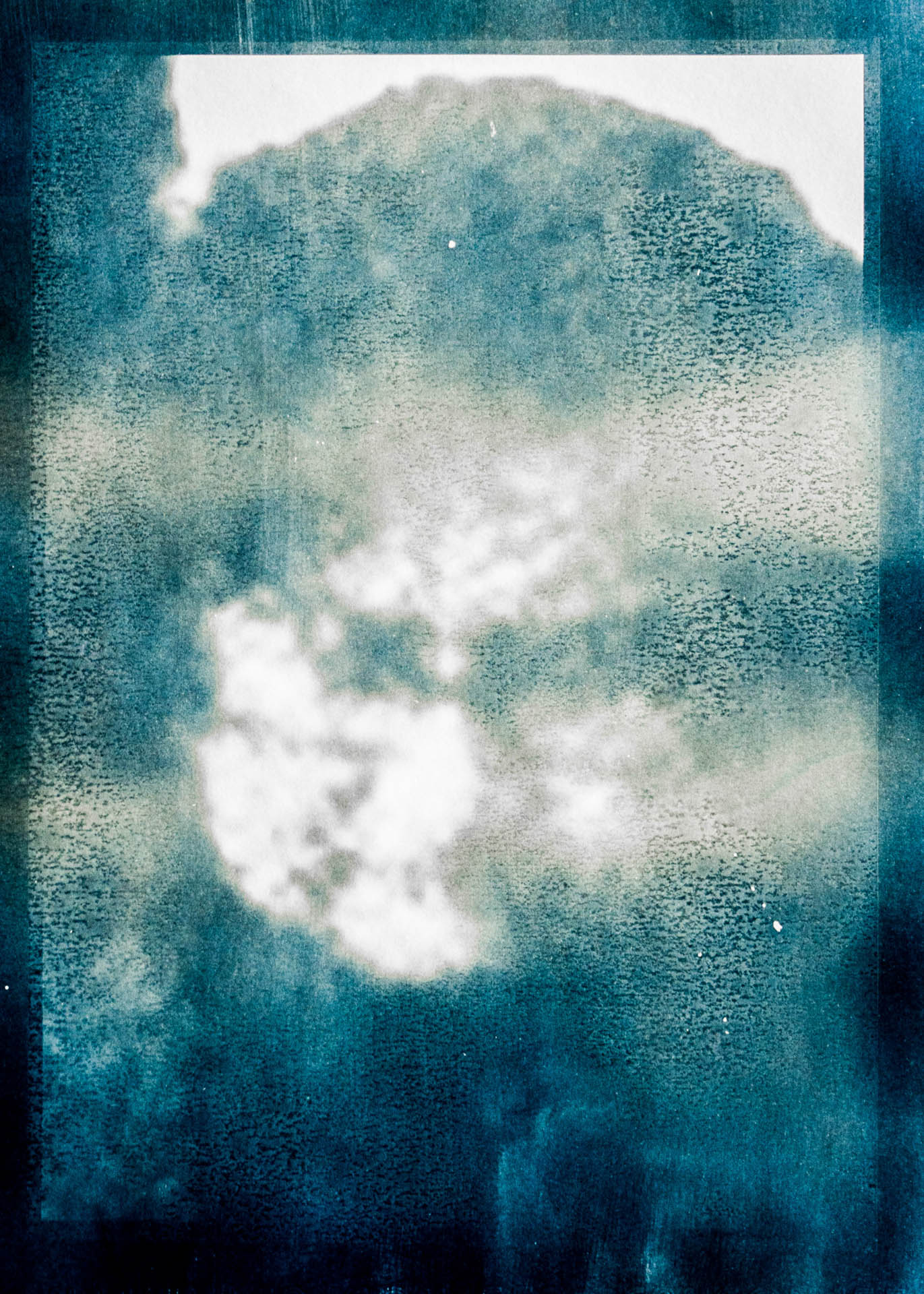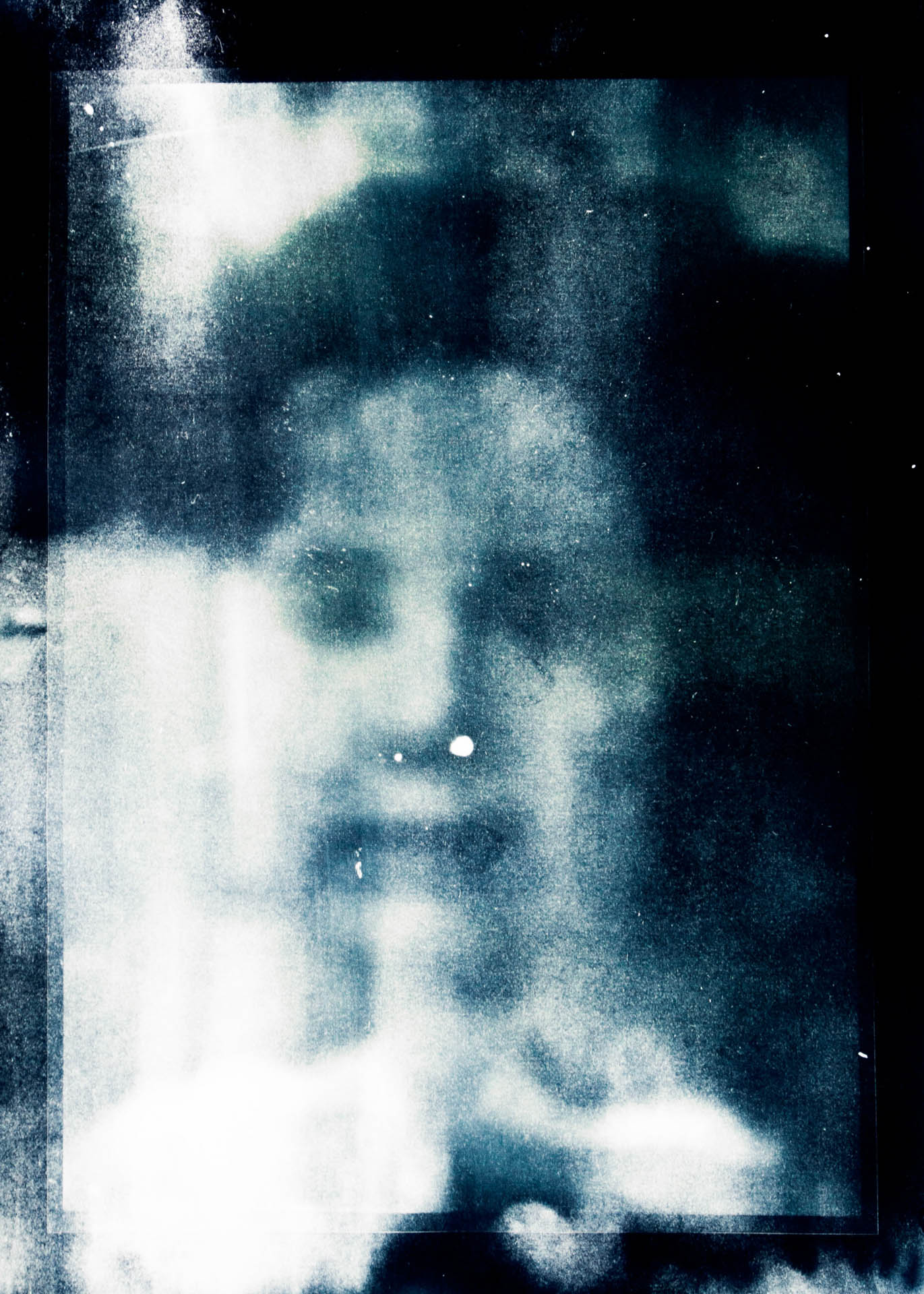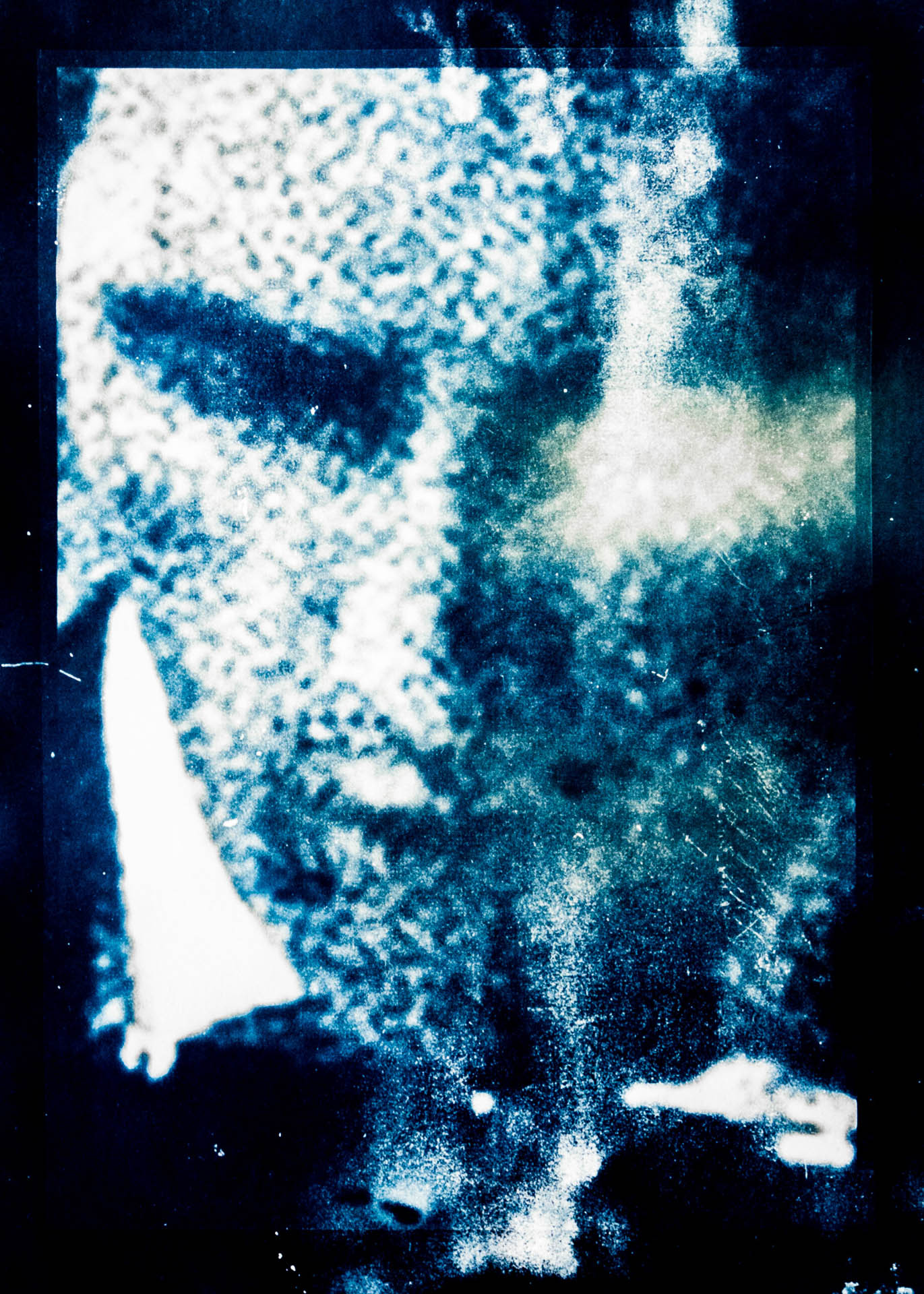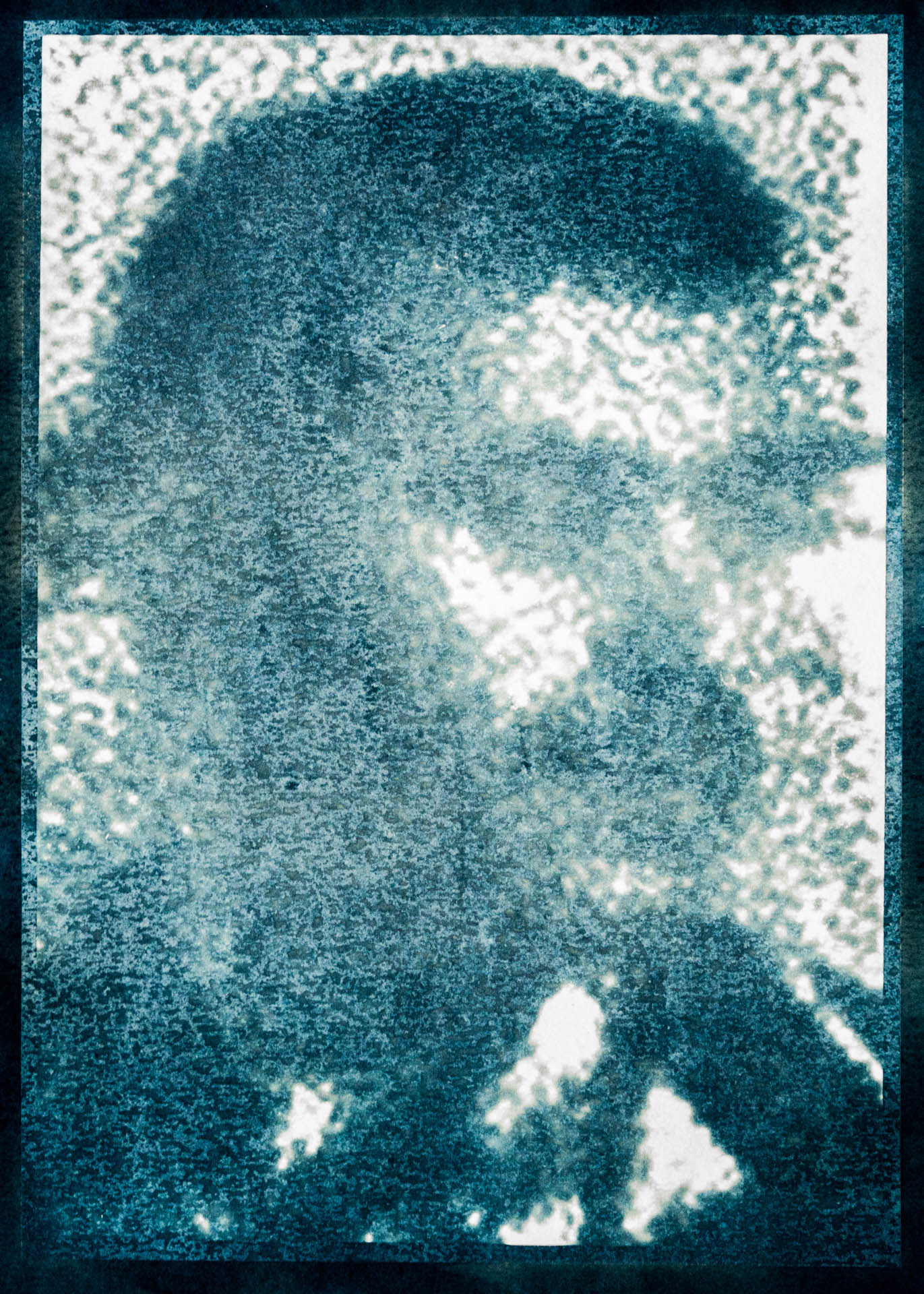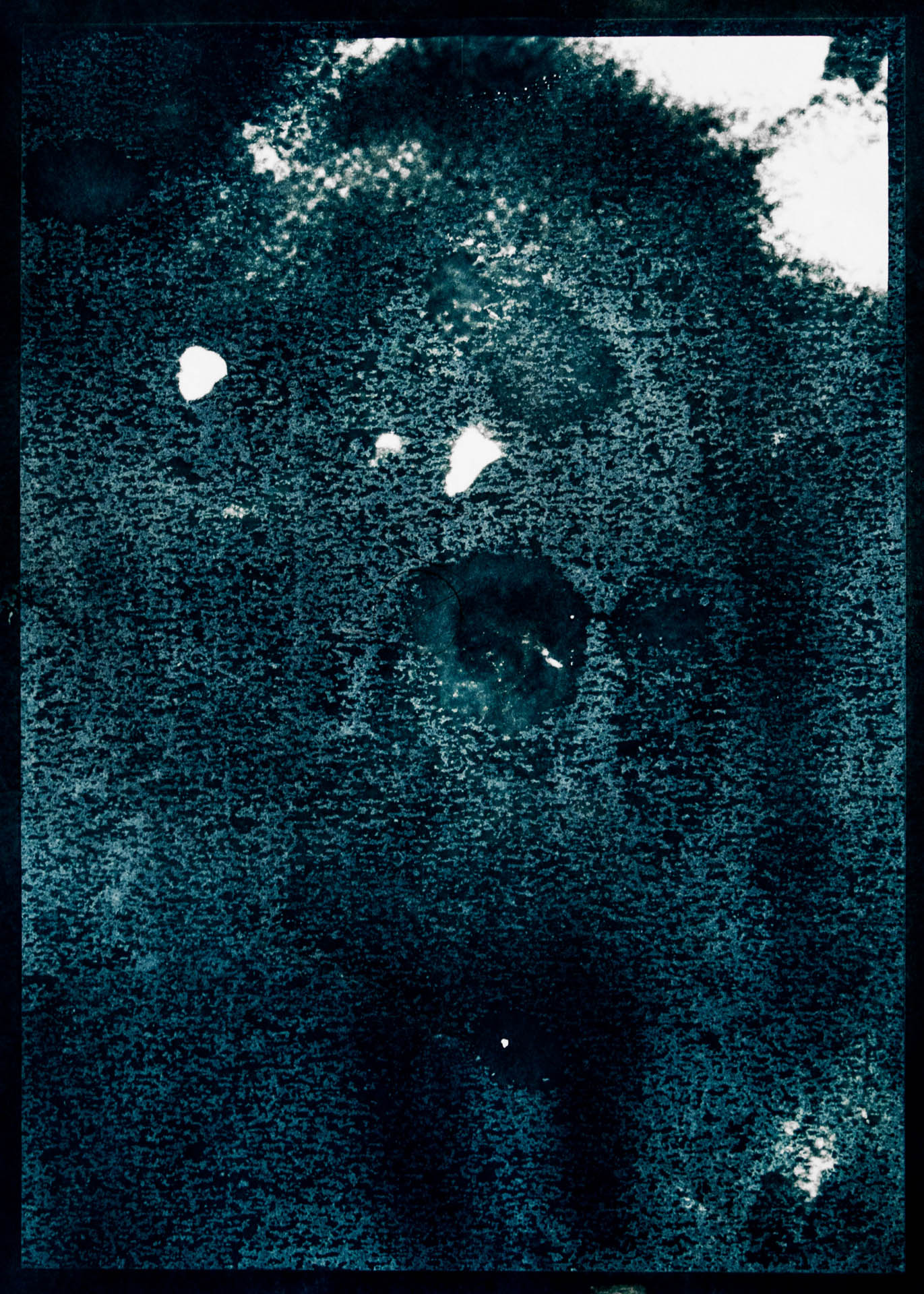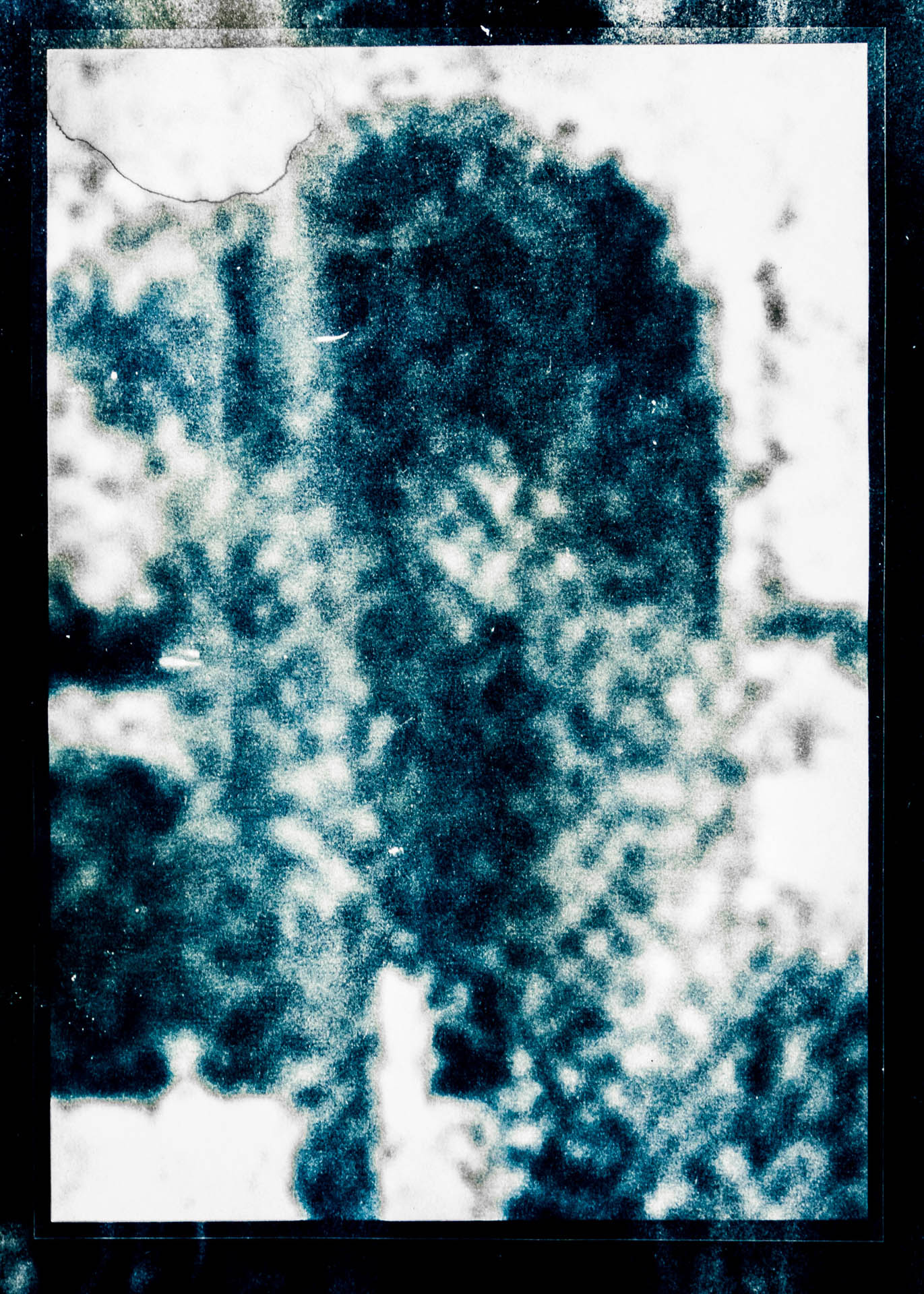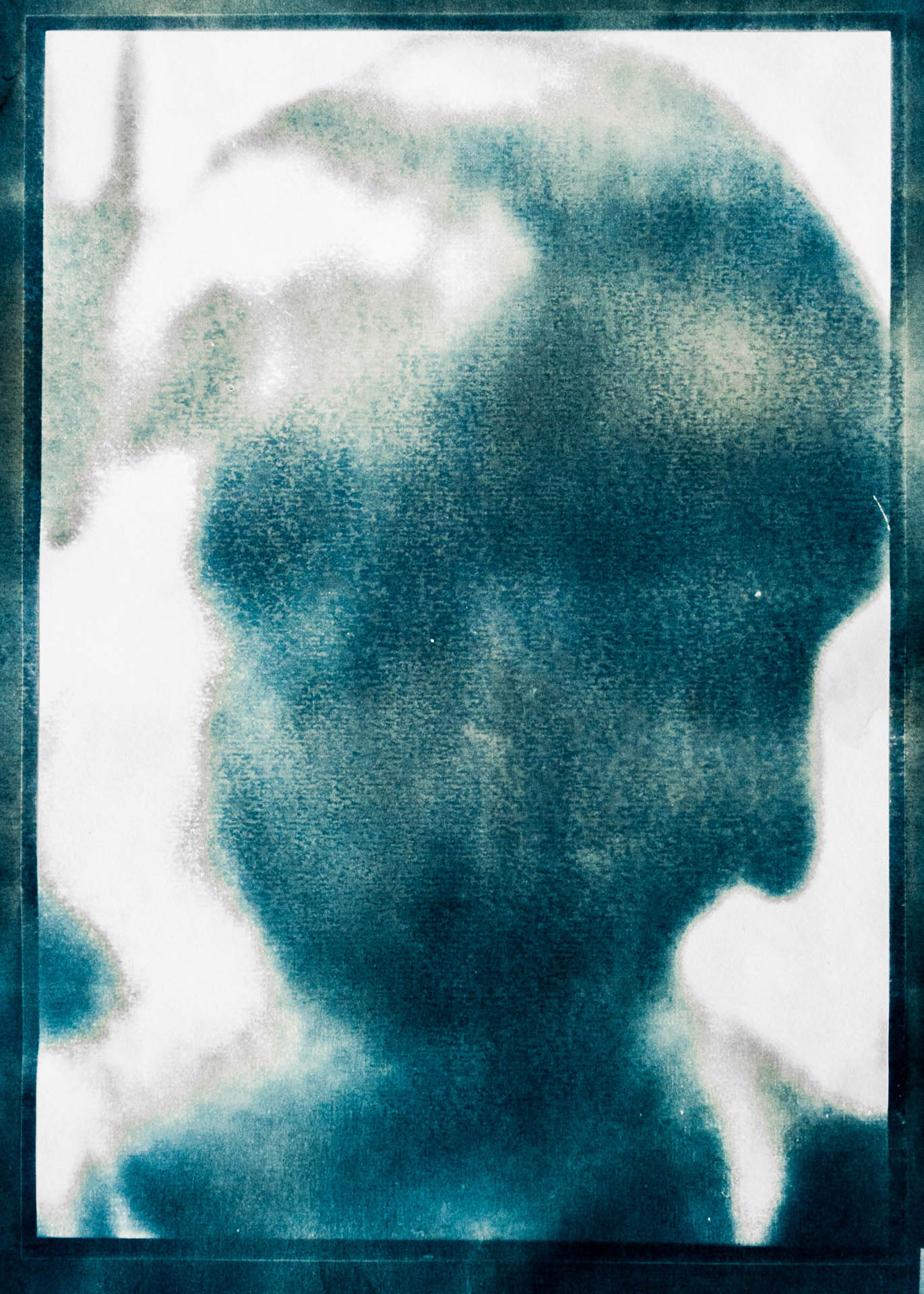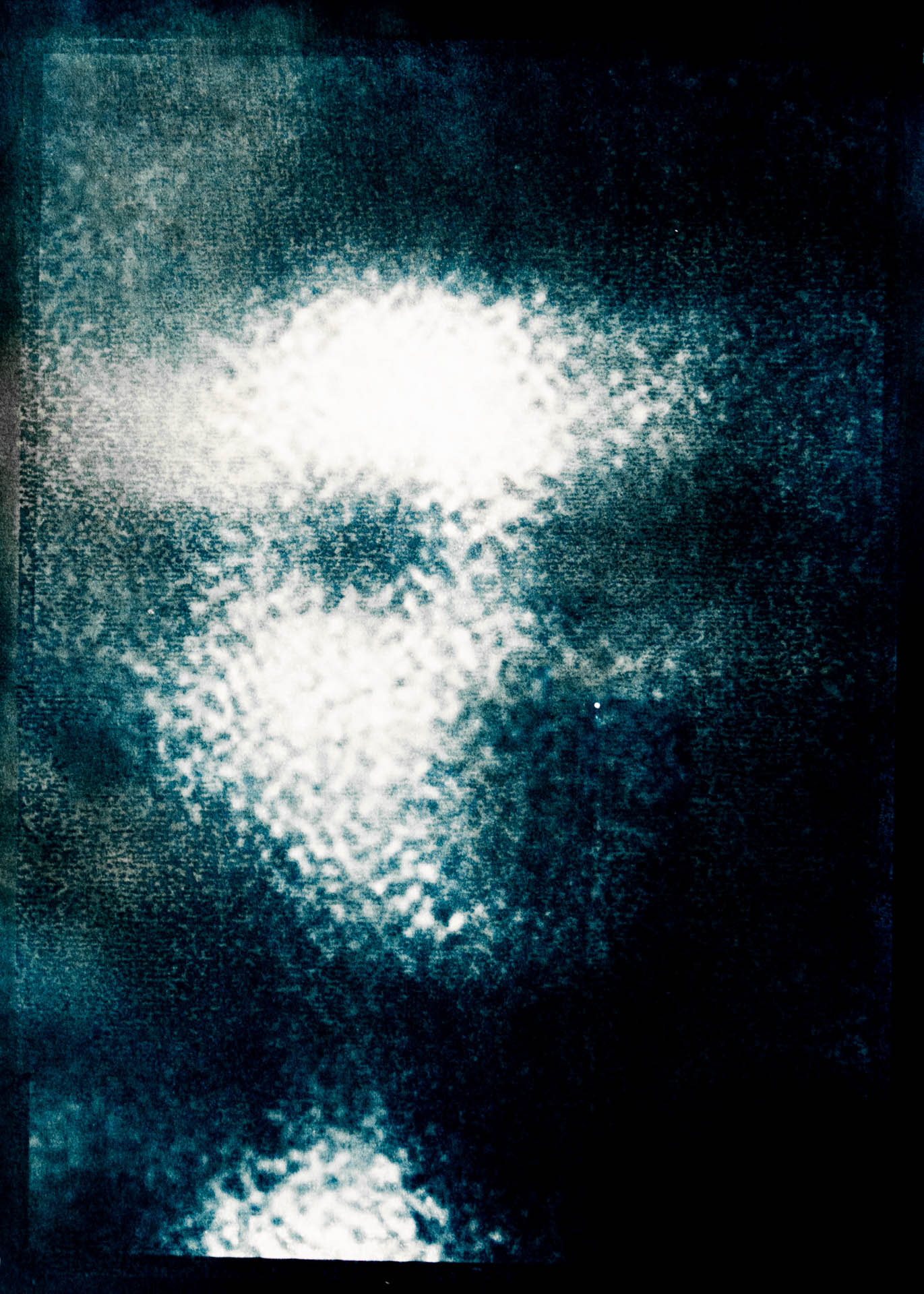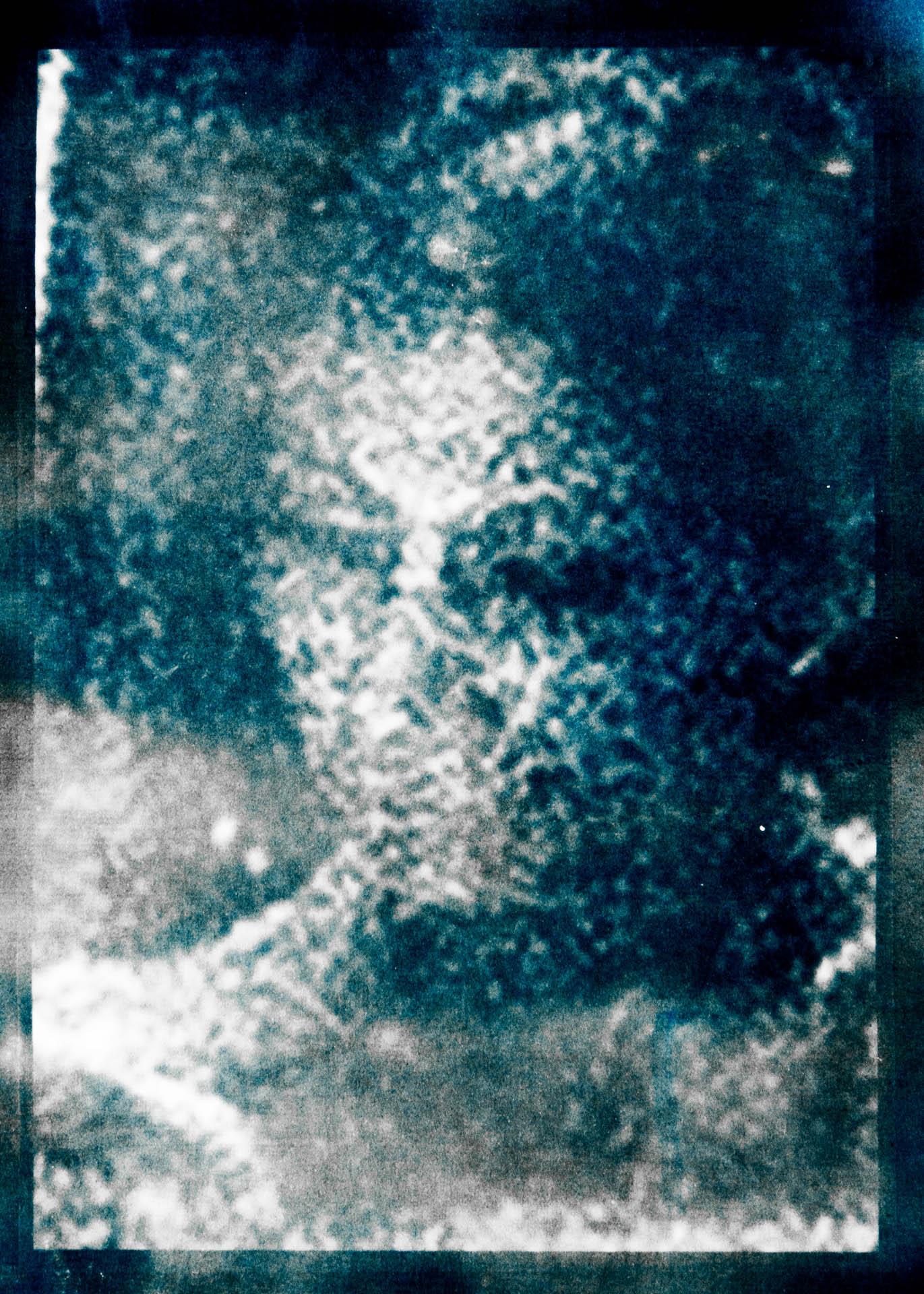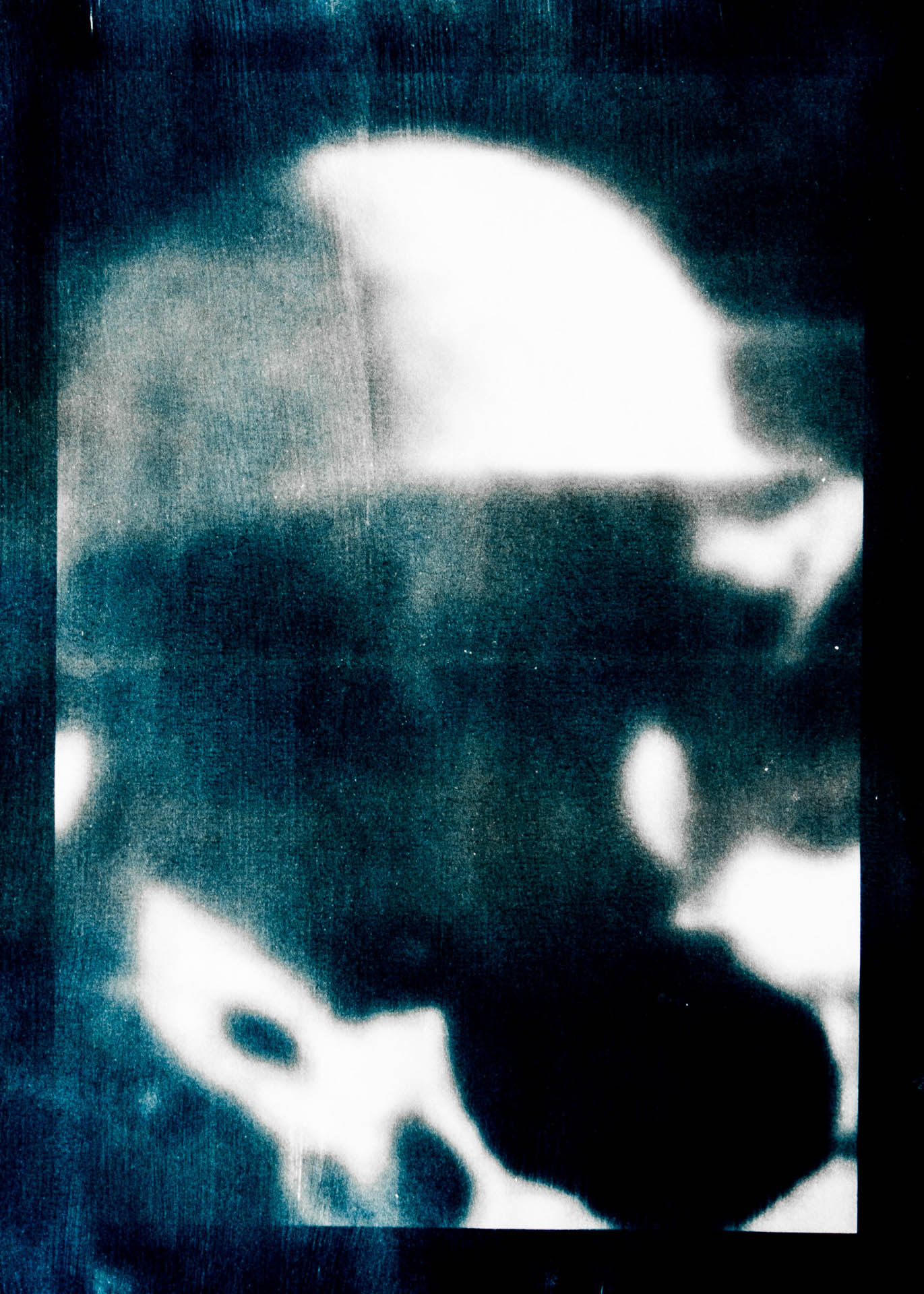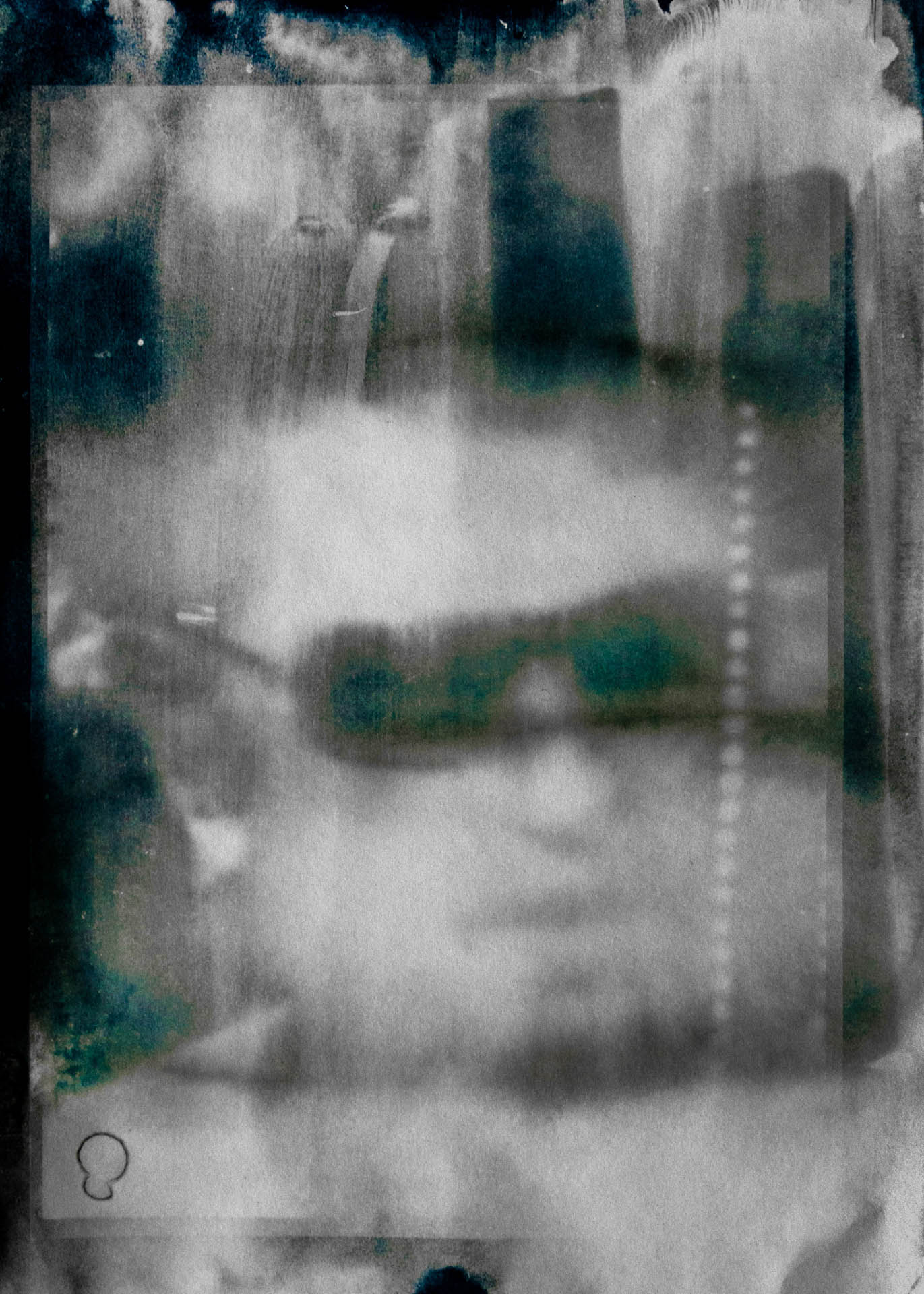New Memory
Photography Series
25×35CM, Cyanotype Prints
2015
The New Memory project intersects the experimental potentials of cyanotype processes and the structural reasoning of digital glitch and computational magnification. By utilizing interpolation methods such as bicubic, bilinear, and nearest-neighbor algorithms to enlarge details of unspecified human faces taken from photographs, the project produces hybrid outputs that bridge analog and digital practices. These distorted photographs are then realized as cyanotype prints, a 19th-century light-sensitive photographic process, setting up a dialogue between technological precision and the unpredictability of handmade processes.
Center stage of the project is an inquiry into memory as a transitory, multi-faceted material. The distorted faces—smashed, pixelated, or lapsed into abstraction by computationally enhanced blow-up—bear witness to the fractured quality of recollection. These ambiguities of the visual correspond to how the memories themselves deteriorate with the passage of time, becoming unclear or reconfigured through the process of being repeatedly summoned mentally. The built-in nature of the cyanotype—cyan-blue hue, chemical idiosyncrasies, and vulnerability to environmental factors—also has the effect of highlighting themes of transience. The finished prints are traces, not so far removed from ephemeral mental visions that linger in the subconscious but are impossible to define.
The work invites contemplation of the dynamic between presence and absence. Faces, no matter how distorted, carry a haunted sense of familiarity, suggesting the remnants of individuals or events that hover at the periphery of public memory. This tension is heightened by combining digital and analog processes: interpolation algorithms mathematically "fill in" missing information during enlargement, while hand development of the cyanotype introduces organic variation. The tension between these processes reflects the paradox of memory itself—a simultaneous process of reconstruction and obliteration.
The layered, semi-translucent quality of the prints implies a cumulative atmosphere of images, redolent of the immaterial yet everywhere presence of collective cultural or experiential scars. Glitch aesthetics, with their warped data and visual white noise, are similar to the disjointedness of memories that intrude unbidden or resist logical chronology. In fetishizing these interstitial moments—the nearly imperceptible, the half-remembered—the project demonstrates the in-between space wherein meaning trembles between lucidity and opacity.
Thematically, the work interrogates the manner in which perception is mediated by technological and cognitive processes. Interpolation algorithms, in trying to enhance resolution, end up generating artifacts that distort the original image. Similarly, memory recontextualizes lived experience through subjective filters in a manner that tends to privilege emotional truths over empirical ones. The cyanotype's monochrome palette and otherworldly quality also work to abstract the figures, rendering them as ghostly traces rather than material presences. This encounter positions New Memory as an investigation into how visual and mnemonic systems both traverse the boundaries of legibility.
Lastly, the project presents a visual dictionary of disappearance, forgetting, and the simultaneity of presence and absence. In its juxtaposition of obsolete photographic techniques and contemporary digital interventions, it underscores the liquid state of memory in an era dominated by rapidly changing technologies. The blanked-out faces are not, then, portraits of sitters, but metaphors for the ephemeral impressions that make up collective and individual histories—echoes that persist, yet always remain unresolved.
